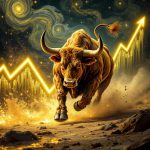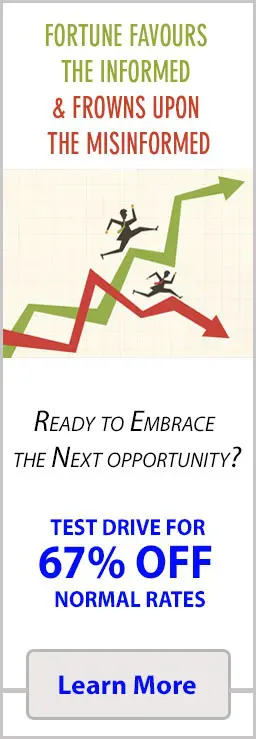Selling Fear Works—Because the Herd Always Bites
July 21, 2025
They say history doesn’t repeat, but in markets, it doesn’t just rhyme—it detonates on a schedule.
Fear is Wall Street’s oldest shortcut. You don’t need a new crisis—just a new excuse. Change the date, change the ticker, but the emotional machinery stays identical. One spark, and the herd reacts exactly the way it did in ‘08, ‘01, ‘87, or ‘29—like they’ve never been here before. They’re not dumb. They’re just wired to survive, not to strategize.
Markets punish that survival instinct with mechanical cruelty.
Every time the VIX spikes, every time the headlines shriek “collapse,” every time sentiment flips from FOMO to GTFO—you can predict the next move: the herd bites. They always do. Because panic is primal. Because safety feels better than strategy. Because most investors don’t trade cycles—they trade emotions. And emotions make terrible analysts.
The operators know this. They don’t react. They bait. They build positions while the crowd empties theirs. The game isn’t new—it’s just that most people never learned the rules.
The Emotional Selloff Is a Business Model
Panic isn’t an accident—it’s engineered.
Fear sells fast, scales wide, and monetizes beautifully. That’s why it’s repackaged, rebranded, and re-broadcast 24/7. Media doesn’t just report market chaos—it amplifies it. Headlines are optimized for cortisol. Charts bleed red not just because prices fall—but because red triggers your brain faster than logic. It’s dopamine warfare, and most investors don’t stand a chance.
CNBC doesn’t care if you’re positioned right. Twitter doesn’t care if your thesis holds. The game is attention, not accuracy—and fear dominates that scoreboard.
And institutions? They play the other side. While the public panics, the pros accumulate. Market makers widen spreads. Quants hunt liquidity gaps. Hedge funds front-run ETF outflows. The whole machinery is built to profit from reactive retail. Every crash is a sale, and every sale needs a stampede.
Livermore didn’t have algorithms or bots, but he didn’t need them. He had the crowd. He studied their rhythms—how they rush in greed and stampede in fear. “The big money,” he wrote, “is not in the buying or the selling, but in the waiting.” Waiting for what? For fear to reach full saturation. For the weak hands to cough up value. For the media storm to burn itself out.
The 2008 Blueprint: Crisis = Clearance
If there was ever a masterclass in how panic creates fortune, 2008 was it.
Banks were burning. Trust collapsed. The financial system looked like it was held together by duct tape. The S&P lost half its value. Liquidity vanished. And yet—that was the moment. Not after the dust settled. Not when the charts turned green. But at peak chaos. That’s when the best entries were printed.
You had to buy into collapse. That was the play.
And barely anyone did.
Because fear, once internalized, becomes a belief system. It makes people forget price. Forget fundamentals. Forget history. It convinces them that survival means liquidation. That cash is safety. That risk is death. And that’s when real investors eat—when others pray for exits, they’re loading trucks.
Ray Dalio saw it as the natural end of the leverage cycle. Booms inflate on debt. Busts detonate on margin calls. Fire sales don’t care if the asset is good—they just want out. That’s where the serious gains are made: when quality gets marked down with garbage, simply because everyone’s too spooked to distinguish.
But most people didn’t wait for value—they waited for comfort. And comfort never comes at the bottom.
That’s why most funds missed the rebound. It’s why retail locked in catastrophic losses near the lows. They didn’t just suffer from volatility—they suffered from narrative contagion. Soros called it reflexivity. Prices fall, so stories turn bearish, so more people sell, so prices fall again. Until someone—usually quiet, usually loaded with dry powder—breaks the loop and buys what no one else can stomach.
And that’s the game.
Fear Is Viral—But So Is Patience
March 2020 wasn’t just another crash. It was velocity-level chaos. Markets didn’t bleed—they evaporated. Oil dropped below zero. Airlines begged for cash. Every headline screamed extinction. And the herd? They obeyed. They sold. Again.
But behind the noise, patience was at work. Quiet money moved in—accumulating energy, infrastructure, and banks while Twitter hallucinated the end of capitalism. Not because anything looked healthy. But because prices had fully detached from value.
The smart don’t need hope—they need dislocation.
That’s why real buying never comes with fanfare. It comes wrapped in silence, nausea, and disbelief.
The Herd Needs Comfort—The Astute Need Discomfort
The average investor waits for reassurance—green charts, good headlines, Fed guidance. But by the time comfort arrives, value’s gone. The best trades always feel terrible when you’re placing them.
Livermore nailed this a century ago: markets aren’t wrong, but opinions usually are. And the crowd’s opinion at extremes? Always backwards. They sell strength too late. They buy safety too early. Their timing is emotional, not strategic.
Meanwhile, the sharp lean into the ache. They use the crowd’s fear as their fuel. Not because they enjoy risk—but because they understand that clarity never comes at the bottom. Only discomfort does.
Why Selling Fear Works on the Masses
Because fear feels like action. Selling in panic delivers instant relief. It numbs the uncertainty. It creates the illusion of safety. But in markets, emotional relief is a receipt for long-term regret.
Behavioral finance explains it as loss aversion. The pain of losing is twice as powerful as the thrill of gain. That ratio is baked into human decision-making. And it’s why most portfolios implode after the worst has already passed. They don’t sell because they understand risk. They sell because their brain begs for relief.
And that’s exactly why fear is such a profitable product—for the few who know how to fade it.
The Contrarian Playbook Isn’t Complex—Just Uncomfortable
You don’t need to call bottoms. You don’t need to outsmart the Fed. You just need to see blood and recognize the opportunity inside it.
When high-quality companies are down 50–70% on macro headlines—that’s the tell. When broad indexes are dumped indiscriminately—that’s the in. These aren’t rare moments. They’re recurring setups. But only visible to those who’ve trained their gut to override their fear.
This is what ties Livermore, Soros, and Munger together. Different eras. Different styles. Same instinct: use panic to accumulate. Use mispricing to compound.
Because when the herd sells fear, the astute buy freedom.











